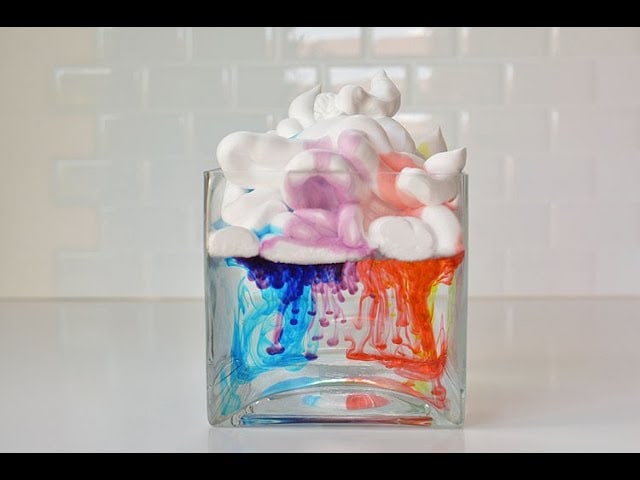Shaving Cream Experiment for Kids: A Rainbow of Fun & Learning!
Hey there, awesome parents! Are you on the lookout for a super fun, incredibly easy, and absolutely mesmerizing science experiment to wow your kiddos? Look no further! The Shaving Cream Experiment is here to bring a burst of color and excitement to your home science lab – also known as your kitchen table!
What is the Shaving Cream Experiment?
Imagine colorful rainclouds in a jar – that’s the essence of the shaving cream experiment. It’s a whimsical and visual way to teach your little scientists about density and solubility, using items that you very likely already have at home.
Why Your Kids Will Love It
Kids are naturally curious creatures, and this experiment taps right into that innate wonder. It’s a hands-on activity that results in a beautiful display of swirling colors, all while offering the chance for a sneaky little science lesson. Plus, it’s a fantastic opportunity for them to develop their observation and prediction skills.
Materials You’ll Need
- A clear glass or jar
- Shaving cream (the foam type, not gel)
- Food coloring (various colors for a vibrant effect)
- Water
- Pipette or dropper
That’s it! See, we promised it would be simple.
Step-by-Step Guide to Colorful Cloud Magic
Ready to get started? Follow these easy steps, and you’ll be basking in the oohs and aahs of amazed kids in no time!
- Fill the Glass: Start by filling your clear glass or jar about three-quarters full with water.
- Shaving Cream Top: Next, spray shaving cream on top of the water to form a cloud. The thicker the cloud, the more dramatic the “rain” will be later on.
- Color Dropping Time: Using your pipette, squeeze drops of food coloring onto the shaving cream cloud. Try not to mix the colors too much at this stage – part of the magic lies in watching them blend later on!
- Watch the Rain: Now, the moment of truth! Watch as the food coloring slowly saturates the shaving cream and begins to “rain” down into the water below. Wow!
What you’re witnessing is a lesson in density – the water in the glass is denser than the shaving cream, which is why the cream floats. The food coloring is denser than both, hence the color-infused rain!
Tips & Tricks for a Successful Experiment
To maximize the wow-factor and educational value of your shaving cream experiment, consider these expert tips:
- Color Choice: Use a mix of primary colors and encourage kids to predict what new colors will form when they mix.
- Quantity Control: Encourage kids to start with just a few drops of food coloring. They can always add more later to strengthen the visual effect.
- Experiment Variations: Play with different amounts of shaving cream or water to see how the “rain” changes. What happens if the cloud is denser?
Every twist and turn of this experiment is an opportunity for a question, prediction, and discovery. It’s just plain scientific fun!
The Science Behind the Fun
While your little ones marvel at the colorful precipitation, they are also getting a front-row seat to some basic scientific principles. The shaving cream represents a cloud, the water symbolizes air, and the food coloring acts like water droplets within the cloud.
As the “droplets” gather color from the food coloring, they become heavier, just like water condensing in a real cloud. When they are heavy enough, they break through the cloud (shaving cream) and fall as “rain” into the denser “air” (water in the jar).
It’s a beautiful, hands-on demonstration of gravity, density, and the water cycle, all rolled into one!

5 Things Parents Should Know When Preparing for the Shaving Cream Experiment
Before you dive into this delightful experiment, here’s your trusty checklist to ensure the activity is as smooth as can be:
- Supervision is Key: Safety first, fun second! Always supervise your children during the experiment, especially because the materials are not edible and food coloring can stain.
- Prep Your Space: Choose a space that’s easy to clean. Lay down newspaper or a plastic tablecloth to catch any spills and protect surfaces from potential stains.
- Experiment Outfit: Have your kids wear old clothes or aprons they can get messy in, as food coloring may not wash out easily.
- Hands-On Learning: Engage with your children by asking open-ended questions such as “What do you think will happen if we add more color?” or “Why do you think the color reaches the water like rain?”
- Photo Finish: Keep a camera ready! You’ll want to capture the amazement on their faces – and the beautiful colors swirling in the jar.
Preparation can make a big difference in turning a simple science activity into a wonderful memory and learning opportunity for your children. Embrace the mess and enjoy the magic!
Customizing the Experiment to Suit Age and Interests
Every child is different, and you can easily tweak this experiment to better suit your little one’s age group or interests. Younger children may enjoy the visual spectacle, while older kids can handle more in-depth discussions about the science involved. Cater to their curiosity!
See more great Things to Do with Kids in New Zealand here. For more information see here
Disclaimer
The articles available via our website provide general information only and we strongly urge readers to exercise caution and conduct their own thorough research and fact-checking. The information presented should not be taken as absolute truth, and, to the maximum extent permitted by law, we will not be held liable for any inaccuracies or errors in the content. It is essential for individuals to independently verify and validate the information before making any decisions or taking any actions based on the articles.




